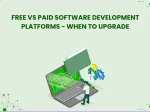The AT&T API Platform SDK for HTML5
At CES this year, AT&T introduced the [AT&T API Platform SDK for HTML5](http://developer.att.com/developer/tierNpage.jsp?passedItemId=9700232), a new SDK based on Sencha Touch that allows developers to easily create apps that connect to its network services. The initial set of APIs introduced are: billing, location, device identity, SMS, MMS, Wap Push and Notary. The Platform SDK is composed of a client SDK and a set of server-side components for developers in Java, Ruby and PHP. Unlimited access to these APIs costs just $99 for the first year. And more APIs are on their way!
The current AT&T API Platform SDK is based on Sencha Touch 1.1, but will be upgraded to Sencha Touch 2, once the release passes the AT&T validation process.
### Network Services for HTML5
Web apps and carrier network APIs are a match made in heaven. The strength of the web has always been that content is easy to publish and users can access that content from any browser, anywhere. The downside of the web has been the difficulty of identifying end users’ identity and location. Before Facebook, it was difficult to create applications that relied on peoples’ real identities. And even now, payments on the web is often a tedious multi-step process, with repetitive entry of personal details and credit card information.
With the AT&T network services APIs, however, we think that this can become a thing of the past. Because your mobile service provider knows which device belongs to whom, and already has a billing relationship with you, it’s now possible to simplify the creation of apps that provide easy billing and device identification (among other capabilities) to developers. While it’s been possible for a while to include carrier billing using other payment services, we think the fact that the service is coming directly from your mobile provider *and* it’s easy to integrate, makes all the difference.
### The Platform SDK APIs
Here’s the run down and a brief description of the APIs, as well as why you might consider using them.
* The [Payments API](http://developer.att.com/developer/apiDetailPage.jsp?passedItemId=10500111) is perhaps the biggest draw for developers. Using it, you can create one time, recurring and subscription charges. You can also even process refunds directly through the API. Today the API is limited to virtual goods transactions only, between $0.99 and $25.
* [Device capabilities](http://developer.att.com/developer/apiDetailPage.jsp?passedItemId=10100301) allows you to look up the make and model (and other capabilities) of the device that your application is running on. The benefit of a network API vs. a useragent lookup is that it’s non-spoofable.
* [MMS and SMS APIs](http://developer.att.com/developer/apiDetailPage.jsp?passedItemId=9700300) are available and easily integrated (we show an SMS example below)
* And finally, an [Oauth 2.0 service](http://developer.att.com/developer/apiDetailPage.jsp?passedItemId=10500015) allows users to authenticate against their AT&T account for access to a third party service.
There is also a device location API which allows non-spoofable location information to be returned to an application, although we imagine in most cases, browser-based geolocation suffices for most applications.
#### Sample Code to Access SMS
The code to access network APIs is quite simple. Below is the code required to create and send an SMS from the AT&T Network SDK. It’s just six lines of code.
MyApp.provider = new Att.Provider();
MyApp.provider.sendSms({
address : “5555555555”,
message : “Hello from Sencha and AT&T”,
success : function(response) {…}
failure : function(error) {…}
});
As you can see, although there is work to install and configure the server-side, once it’s ready, the client side code required is trivial.
### How to Get Started
For all things AT&T, developers can get started at the AT&T developer program home page. Then head over to the Platform SDK home page, where there’s a very thorough guide for how to sign up for the developer program and get your merchant billing account. Finally once you’re ready, you can grab the AT&T Platform SDK itself as well as its sample apps.
* [AT&T Developer program homepage](http://developer.att.com/developer/)
* [AT&T Platform SDK for HTML5 homepage](http://developer.att.com/developer/tierNpage.jsp?passedItemId=9700232)
* [Download Getting Started Guide (PDF)](http://developer.att.com/home/api/APISDKGetting_Started.pdf)
* [Download AT&T Platform SDK for HTML5](http://developer.att.com/home/api/sdk-2.0-r10b.zip)
* [Download Sample Apps](http://developer.att.com/home/api/samples-2.0-Drop10.zip)

The selection of a front end framework for enterprise applications remains one of the most…

Every software project begins with a choice that reverberates through its entire lifecycle: which development…

Building software for regulated industries demands more than functional code. Healthcare organizations must protect patient…









